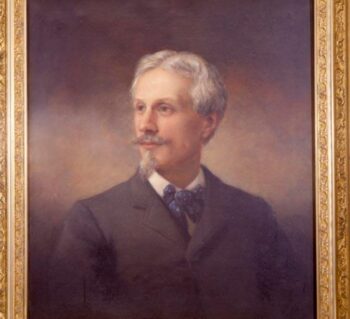
Richmond City Jail

Richmond City Jail troubled from the beginning in Shockoe Bottom.
By Valentine Museum Staff
In the first half of the 20th century in Richmond, criminal justice reform was top in the minds of many citizens and politicians. A few politicians actually ran for office on prison reform platforms. But, in spite of widespread outrage at a broken system, the change most wanted somehow did not materialize for decades. The reform Richmonders cried out for a hundred years ago, however, was not for racial justice or for less brutality. Curiously, at that time, Richmond had a reputation for outrageous criminal leniency, at least for some folks. In fact, the city jail itself was considered a den of iniquity that aided and abetted crime.

As early as 1856, Marshall Street in Shockoe Bottom has been the site of a jail. But the one built there in 1902, and which stood for 55 years, was considered a municipal embarrassment for pretty much its entire existence. Only eight years after construction the City Sergeant called it antiquated and obsolete. Built to house 300 people, the jail was nearly always overcrowded. It was also poorly planned, poorly constructed, and poorly sited. Built directly beneath the Marshall Street Viaduct, the main bridge that spanned Shockoe Valley at the time, the jail’s hidden location only added to its problems. Passersby on the bridge easily lowered contraband into unscreened cell windows. The window bars were so cheap that prisoners filed through them faster than the city could replace them. Once a prisoner broke out, it was easy to disappear without being seen, often by hopping a train on the nearby C&O tracks. Politicians joked that it was a jail “easier to get out of than to get in.”

When Prohibition took effect in 1920, Richmond City Jail went from being a problem to an outright joke. Unable to accommodate the masses of arrests each night, City Sergeant George Saunders, who ran the prison, adopted a laissez faire attitude to wait the law out. Rabble-rousers were housed in one boisterous common room. Visitors at all hours, who were not searched, simply brought the interrupted party to the prison. Alcohol flowed freely, prostitutes worked the room, and prisoners largely came and went at will in what was called the “trusty system,” though it is doubtful that Black inmates enjoyed the same freedoms as whites in the segregated jail. Nevertheless, Richmonders began to call the jail “Saunders Chateau.” The permanent party beneath the Marshall Street Viaduct enraged citizens and politicians, though the building remained unchanged until 1934, when an escape turned deadly.
On September 29, 1934, convicted killers Robert Mais and Walter Legenza were on their way to the jail office to speak to their lawyer. They were unhandcuffed and the guards were unarmed. In the hallway, the prisoners pulled pistols and began to shoot. One officer was killed, two were injured. Once past the guards, Mais and Legenza just walked out of the jail’s front door. Amazingly, the lock on the entrance could not be opened from outside, but opened freely from the inside.
The men, undoubtedly, had acquired their pistols from a visitor. Some suspected that Mais’ mother had smuggled them in a can of baked chicken. No matter the exact method, everyone knew that it had been way too easy. The tragic death of a guard finally prompted some improvements at the city jail, including quality bars on the windows. At some point, the authorities hung nets from the viaduct to prevent contraband drops. But the changes were not nearly enough to make a competent facility.
Ten years later, a federal inspector still found wine flowing, inmates leaving for bars, inmates returning from haircuts, and cells with locks that had been broken for years. For some down and outs, the jail had become free housing. About twenty “regulars” spent ten months of the year there. A city alderman was also unimpressed by improvements when he remarked, “You’ve still got just an old jail, under a viaduct, near an incinerator, near a dump and near railroad tracks.” Strangely, the federal inspection did not lead to a new jail, but only an increase in capacity from 300 to 400. The den of iniquity only got bigger.
The notorious Richmond City Jail seemed as permanent as a mountain, as unshakeable as original sin. The building itself came to embody impunity. No one was happy with it, though it persisted despite decades of public outrage, editorials, bad press, failed inspections, new prison proposals, protests, escapes, embarrassments, political speeches and promises. So what finally did it in? What finally moved the mountain? Like so much of our city, it was in the way of the new turnpike. In 1957, the building finally came down to make way for I-95.
Need to cite this?
| Authors | Valentine Museum Staff |
|---|---|
| Work Title | Richmond City Jail |
| Website | https://thevalentine.org |
| Published | October 11, 2023 |
| Updated | May 24, 2024 |
| Copyright | © 2024 The Valentine Museum |


